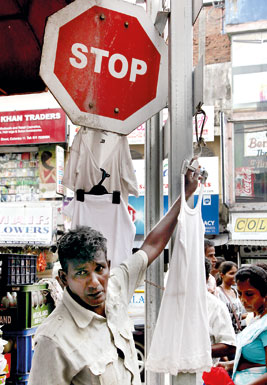Against a backdrop of delays in making pictorial health warnings on cigarette packs mandatory, almost 110, 000 new smokers have taken up smoking within the last five years,
The Nation learns.
Senior House Officer at the National Cancer Institute, Maharagama and President of the Cancer Care Association of Sri Lanka, Dr. Samadi Rajapaksa said according to statistics from the tobacco industry itself, between 80-90 persons either die from tobacco related illnesses or quit smoking every day. Hence, the industry has to recruit 60-70 new smokers daily to replace the ones it loses, he noted.
The World Health Organization (WHO) Framework Convention on Tobacco Control (FCTC), which came into effect in February 2005, was the first international legal instrument designed to counter the spread of the worldwide tobacco epidemic. According to the WHO, since then, the FCTC has become one of the most widely embraced treaties in the history of the United Nations, with more than 170 parties covering 87% of the world’s population.
Sri Lanka was the first in the South-East Asian region to ratify the WHO FCTC. The country enacted a Tobacco Control Act in 2006 to aid in comprehensive tobacco control and established the National Authority of Tobacco and Alcohol (NATA) to implement the Act.
There are several key tobacco control measures recommended for implementing the FCTC. Article 11 of the FCTC requires parties to the FCTC to implement effective measures to warn against the harmful impact of tobacco on all tobacco product packaging. This process requires the implementation of a pictorial warning policy for tobacco product packages and should occur within three years after ratifying the FCTC. Since Sri Lanka was one of the first signatories to the convention in 2005, this regulation should have been implemented by 2008. However, this is yet to happen, and the country is now five years behind schedule in implementing this regulation.
The pictorial health warnings were supposed to have been on cigarette packs from 2008. If one were to make a conservative estimate, if 60 new smokers took up the habit in a day, one would have around 21, 900 new smokers in a year. Multiply that by five, and it would amount to around 109, 500 new smokers within the past five years.
According to Dr. Rajapaksa, the tobacco industry’s primary targets are adolescents.
“Such young people are typically adventurous and wish to experiment. They are easy targets for the industry. However, if pictorial health warnings are introduced, it would drastically reduce the number of new smokers”, Dr Rajapaksa opined.
He also dismissed the claim made by some that pictorial health warnings on cigarette packets would be ineffective in Sri Lanka because most buy only one or two cigarettes at a time and not an entire pack.
He claimed potential smokers, particularly adolescents, would be discouraged from smoking after seeing the graphic images printed on the packages. “Display in shops anyway. The public can see them. It will act as a deterrent”, he explained.
He stressed it is ‘unfair’ by the Sri Lankan population not to disclose the side-effects of smoking to smokers, which is what the pictorial health warnings do.
Dr. Rajapaksa pointed out that pictorial health warnings were in force in other Asian countries including India, Pakistan, Thailand and Malaysia.
Sri Lanka currently ranks joint 2nd (along with Uruguay) among countries that have warnings covering more than 50% of the package front and back, according to a report titled Cigarette Package Health Warnings: International Status Report. Accordingly, pictorial health warnings are slated to take up 80% of the pack, both front and back. Australia leads the rest of the world in pictorial health warnings on cigarette packs, with 75% of the front and 90% of the back covered.
Implementation of the regulation of pictorial health warnings on cigarette packs (Article 11) is a requirement of the FCTC, by all the Parties to the treaty within three years from the date of ratification of the treaty. In Sri Lanka, after repeated delays, the regulations on pictorial health warnings were enacted by a special gazette notification in August 2012 to be effective from March 1, 2013. However, the tobacco industry has been fighting the measure in Court, aiming to reduce the size of the pictorial warnings on packs.





